Platycodon: [Care, Planting, Irrigation, Substrate and Pests]
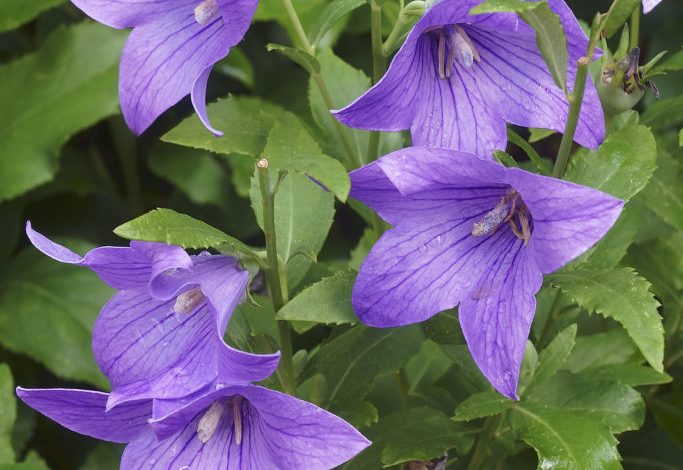
Important points when planting Platycodon
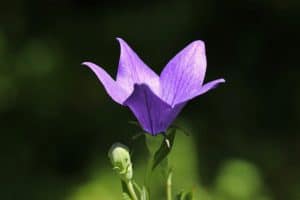 When? Preferably, it should be sown in spring, but it can also be grown in autumn if it will live forever in a balcony or terrace pot.
When? Preferably, it should be sown in spring, but it can also be grown in autumn if it will live forever in a balcony or terrace pot.- Where? It can be grown in gardens and pots that have a privileged space on balconies and outdoor terraces.
- How do we prepare the land? With many nutrients, good drainage, loose, better without calcareous. Perlite to compacted garden soil is great.
- How do we pay? With excellent quality mineral fertilizers, every 15 days in spring and summer to achieve a lot of flowering.
- When do they bloom? Its large, showy flowers open in late spring and last through the summer.
- Ideal temperature? It lives calmly in temperatures from 10-30ºC, as long as they are kept well hydrated and in semi shade. It thrives easily in temperate climates. Does not tolerate frost.
- How do we water? Very sparingly, to avoid rotting of the plant. Always moist is vital, but never flood the substrate.
- Diseases and pests? They hardly get sick because they are very resistant, but you should always check for possible attacks by aphids and red spiders.
What is Platycodon?
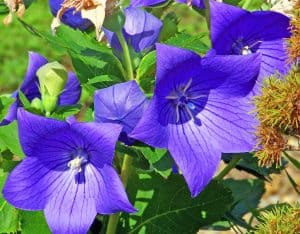 The Platycodon or Platycodon grandiflorus, is a beautiful perennial species for ornamental use, also known as Chinese Bell or Balloon flower (in English), due to a special characteristic: its buds inflate, emulating striking balloons, atypically large, shortly before the opening of its flowers.
The Platycodon or Platycodon grandiflorus, is a beautiful perennial species for ornamental use, also known as Chinese Bell or Balloon flower (in English), due to a special characteristic: its buds inflate, emulating striking balloons, atypically large, shortly before the opening of its flowers.
Originally from the northeast region of Asia, it is considered a sacred symbol in the Japanese cities Isehara and Ichinomiya.
Likewise, it reveals its spectacular beauty in China, Korea and eastern Siberia.
It has a long-lasting bloom, which begins in late spring and lasts all summer, with very large flashy blue petals (5 in total), about 5 centimeters wide and streaks that are evenly distributed. Its stems also branch out in perfect order and the leaves are toothed, oval in shape and light green on the underside and bluish green on the upper side.
Varieties with white, violet and pink flowers are available, growing to a maximum height of about 50 centimeters.
It is very popular in gardens, where it is satisfied with little care. They also have medicinal properties and their roots are often used as a powerful anti-inflammatory, antitussive and natural syrup to fight colds, or as an ingredient in salads.
Where should we plant the Platycodon?
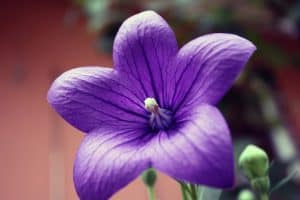 Although they are native to the Asian continent, their ornamental use has spread throughout the world, because they adorn gardens in public spaces and homes.
Although they are native to the Asian continent, their ornamental use has spread throughout the world, because they adorn gardens in public spaces and homes.
It is not favored by abundant natural light.
You have to find a semi-shaded space for it and it is necessary to take into account a very important detail for its survival: it can withstand the less intense rays of the sun, the morning ones. Intense sun exposure, at the hottest time of the day, can completely dehydrate it.
There are species that support low temperatures, but not frost. The ideal is temperatures between 10ºC to 30ºC.
When should it be cultivated?
It has been considered by experts as a rustic plant that is very easy to grow in gardens and pots located on terraces and balconies.
Spring or autumn are times traditionally used to cultivate this beautiful species that demands little and gives a lot, because the spectacle that its colored flowers give is simply unforgettable.
How do we prepare the land when planting the Platycodon?
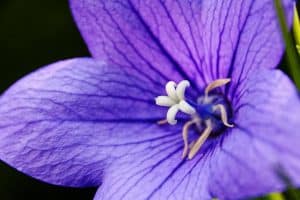 Well-drained, loose, oxygenated and preferably calcareous soils are the favorites of these striking blue plants.
Well-drained, loose, oxygenated and preferably calcareous soils are the favorites of these striking blue plants.
Soils that have a mixture of garden soil, with ¼ peat and ¼ sand, are excellent, so that the water permeates permanently.
It is prudent, however, to fertilize every 15 days in spring and summer, using a fertilizer with a mineral composition so that flowering is abundant.
If the soil in your garden is very compact, we advise you to apply perlite in doses recommended by the gardener you trust.
Liquid fertilizers applied to the irrigation water, spread on the plants in spring and summer are excellent, but try to make them organic, such as: guano and/or earthworm humus.
There are gardeners who recommend the application of fertilizers with a lot of phosphorous and potassium so that the resistance is greater and they survive much longer.
Some apply horse manure, which gives excellent results if mixed with potted garden soil.
How to sow Platycodon step by step?
The way to sow it or multiply it effectively involves several techniques: starting with the division of the plant, the least recommended because it can suffer a lot; by cuttings or by seed planting, preferably in spring.
If you want to have it in a pot, you should consider the following steps:
- Select a pot of good diameter, add a good substrate with organic matter, mixed in equal parts with perlite and add a layer of gravel or volcanic stones to the base or bottom of the pot so that drainage is perfect.
- It moistens the substrate, without leaving it soaked. It really likes moderate constant humidity. If you overdo it, it will rot.
- Spread the seeds, carefully in the pot, with gentle movements made with the help of your hand, without sinking so much. They germinate quickly as long as they have a moist substrate.
- Place the pot in a cool place in your garden, where the sun reaches it but never directly. Half shade will be perfect.
by cuttings
- Growing it in the garden is also simple, because if you decide to multiply it by cuttings, you already know that both the terrain and the incidence of light must be optimal, with nourished soil and moderate natural lighting.
- The section of the garden where you will plant the Chinese Bellflower shoots must be previously fertilized. Stir it to oxygenate and apply any organic fertilizer to stimulate root growth. Or apply a natural rooting agent, based on soaked and germinated lentil water that you blend first and strain later, until you get a mixture with an excellent result.
- When you do the pruning of the plant, take advantage of some tender stems, remove the excess leaves, leave one or 2 small ones on top, but not too many because they will steal the nutrients it needs to develop roots.
- Open the holes in the ground that you need to put the shoots, separated at a distance of about 5 to 7 centimeters so that the roots have enough space.
- Water permanently with moderate sprays. In a short time, it will grow and you will have many buds that will burst to brighten up your spring.
What care does Platycodon need?
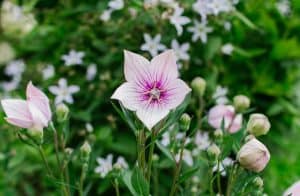 Exposure to the sun should not be intense and it must be planted in a space in the garden where there is rather a semi-shade that protects it from dehydration. But make it clear that it needs sunlight, or it won’t thrive.
Exposure to the sun should not be intense and it must be planted in a space in the garden where there is rather a semi-shade that protects it from dehydration. But make it clear that it needs sunlight, or it won’t thrive.- The soils must have a high nutritional profile and must also be very permeable, to prevent them from getting sick.
- Likewise, it is necessary to guarantee a constant but moderate irrigation at the same time. Watering it every two days, both in spring and summer, with a pot dose of a glass of water per plant, will be more than enough for them to always look radiant.
- In the gardens, watering will be intensified in summer to about three times a week, without soaking the soil.
- The rest of the time, watering should be spaced out because the Chinese Bellflower goes into a state of rest or dormancy in winter and hardly needs any water.
- It does not need to be pruned, but a good strategy to protect it from the cold is to use the leaves it loses in the fall to cover it. Dry stems are also cut in this period of rest or less vegetative activity.
- Another technique is to protect it with pine bark that is placed at the base to shield the roots, which suffer greatly in winter from the cold, a period in which the plant shrinks until it is reborn again the following spring.
What pests and diseases does it have?
The Platycodon has a lot of resistance, it is rare when it suffers attacks from bugs and diseases. However, aphids and red spiders can attack it, so the damaged parts must be removed and the insects removed, with the help of products with low environmental impact.
You can use organic products such as neem oil or potassium soap.

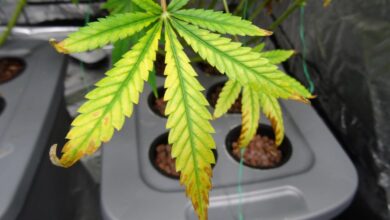
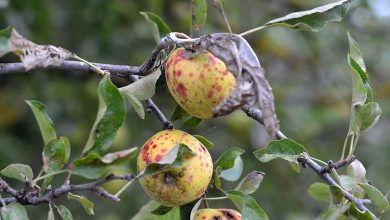
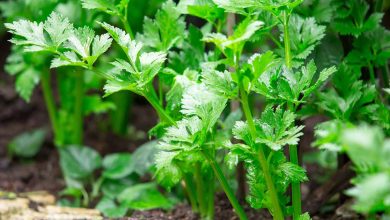
![Photo of Dipladenia: [Cultivation, Irrigation, Care, Pests and Diseases]](https://www.complete-gardening.com/wp-content/uploads/2022/08/dipladenia-cultivation-irrigation-care-pests-and-diseases-390x220.jpg)